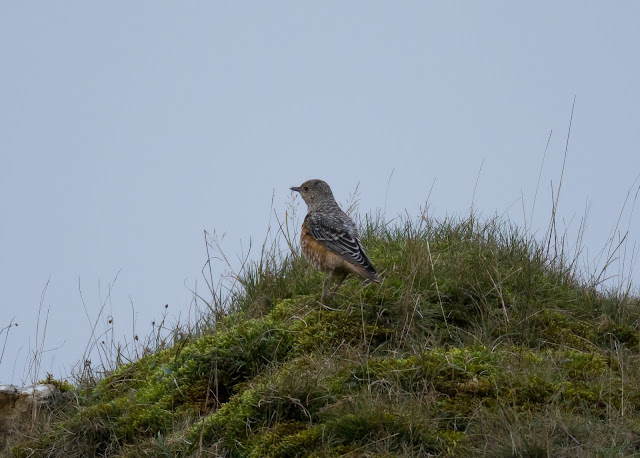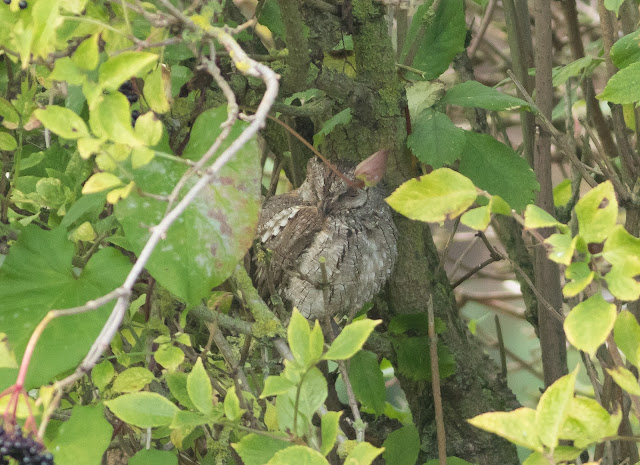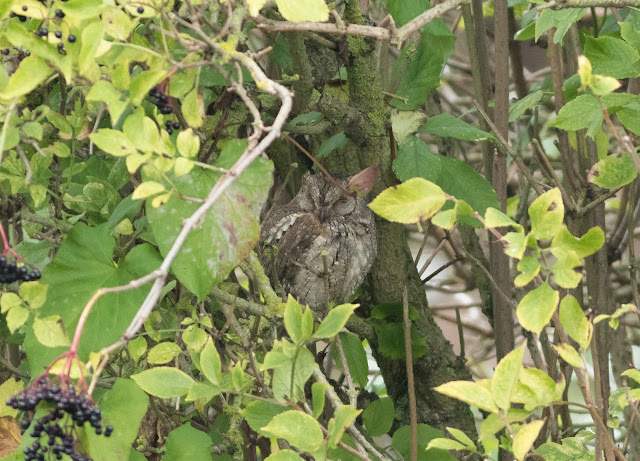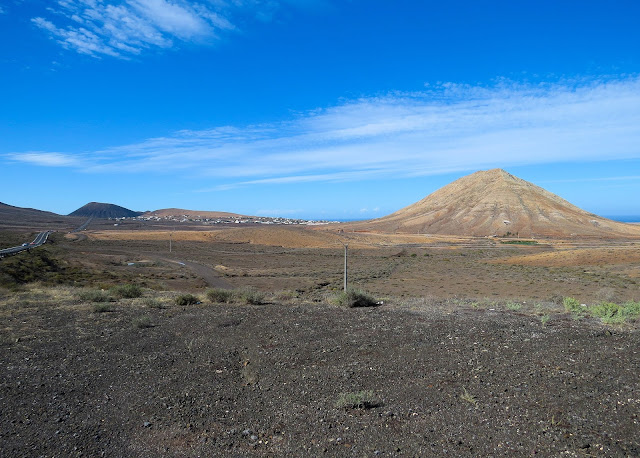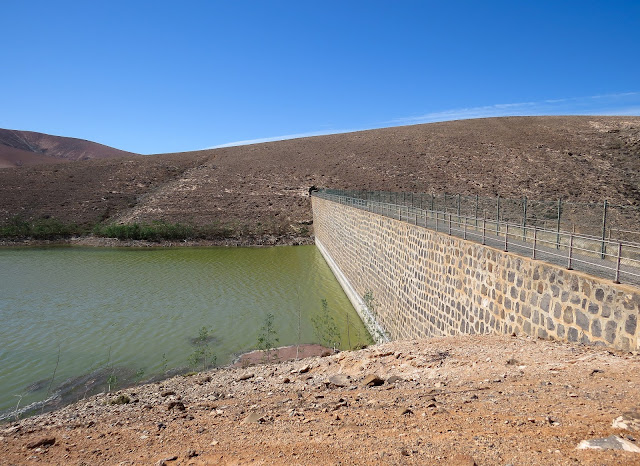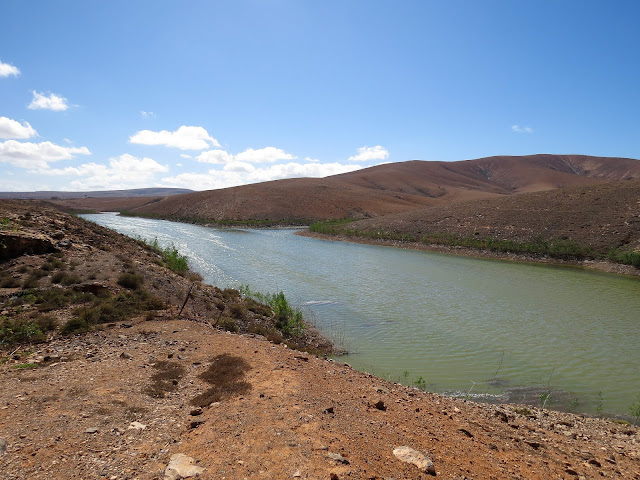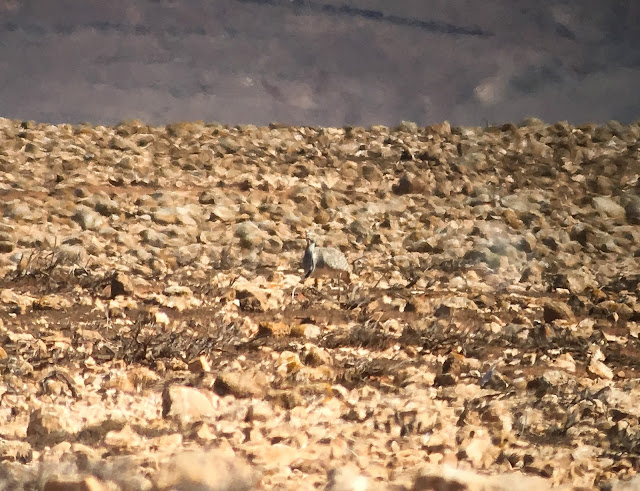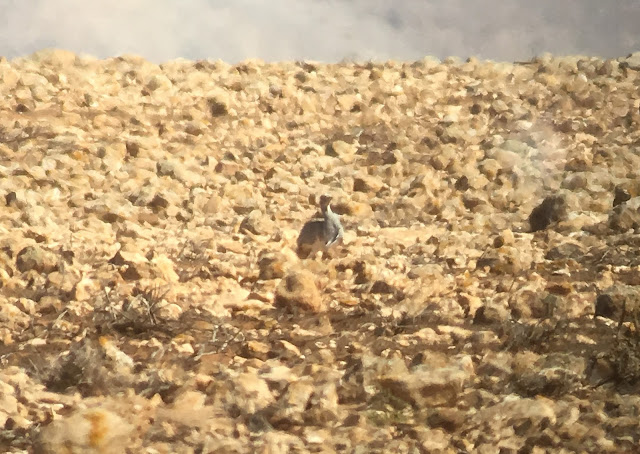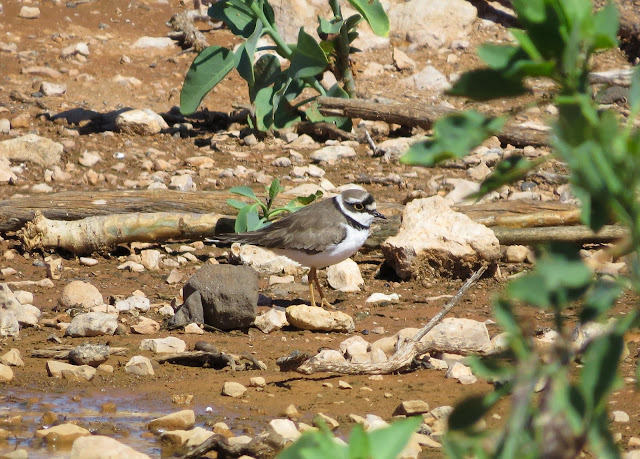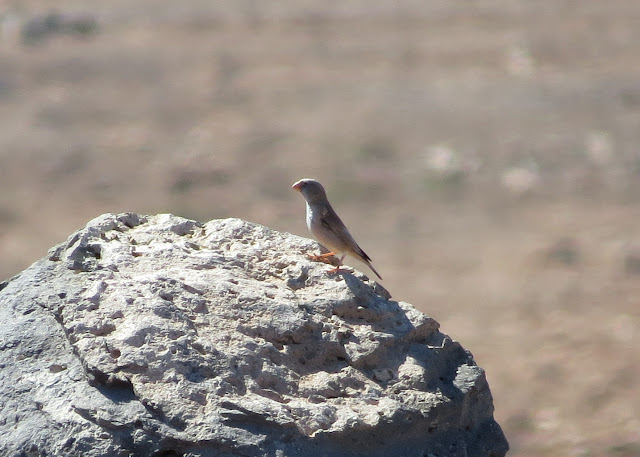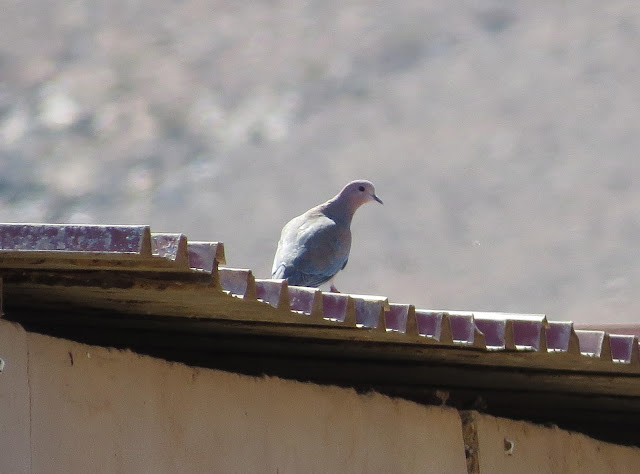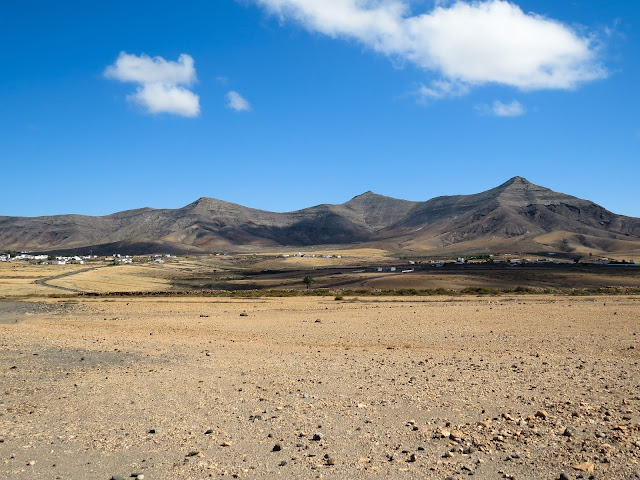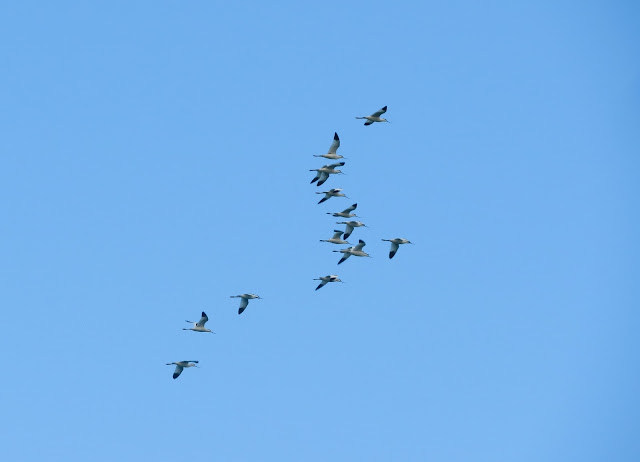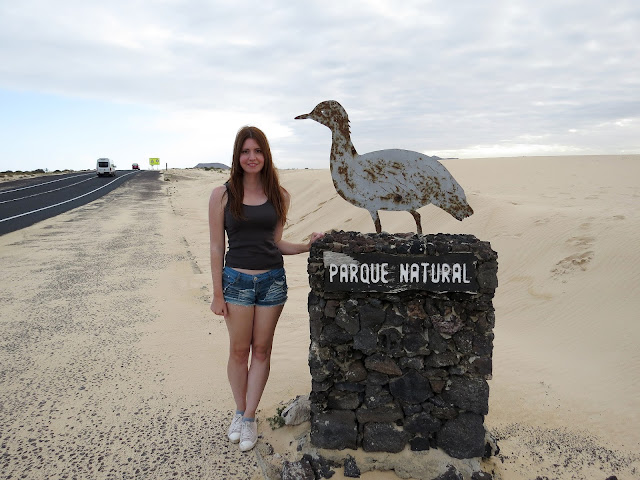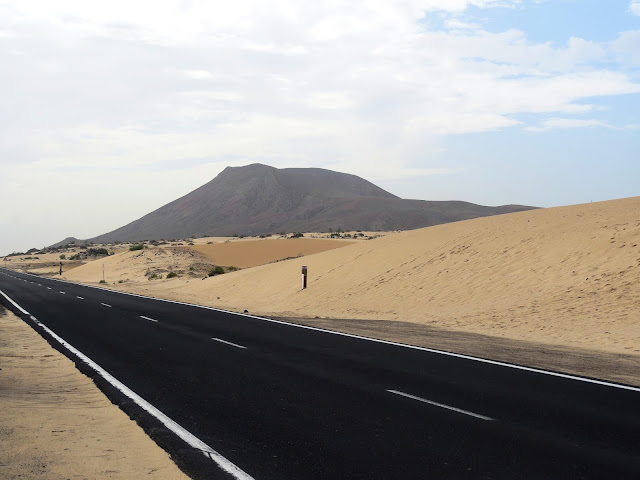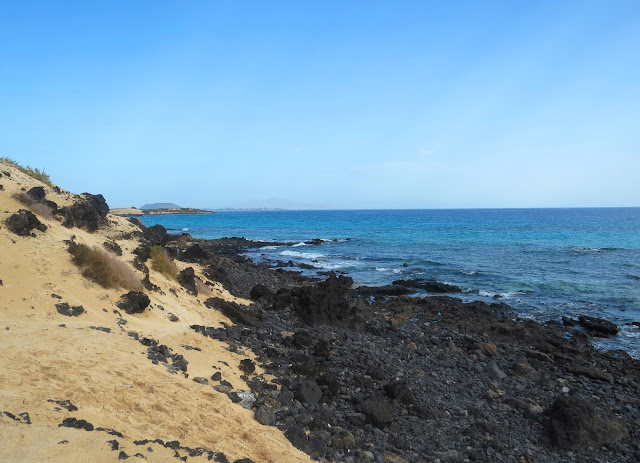There are a number of birds that Alex has on his British list over me that are going to be pretty hard to topple – Marmora’s Warbler, Common Yellowthroat and Cream-coloured Courser all spring to mind as being the ones that will try and see it out to the bitter end. Having not gone for the female Rock Thrush that turned up at Spurn back in spring 2013, despite there being a fine spring male on the Scilly Isles back in April earlier in the year, this was still a species I had not yet managed to grip back.
Fast forward to a wet Thursday in the middle of October when the welcome news of an adult male Rock Thrush broke, having been found at Pwll-du Quarry in the heart of deep south Wales. With photos emerging later that day and a number of happy twitchers connecting, my opportunity to grip back on this mega Mediterranean stray suddenly looked set to be a real possibility.
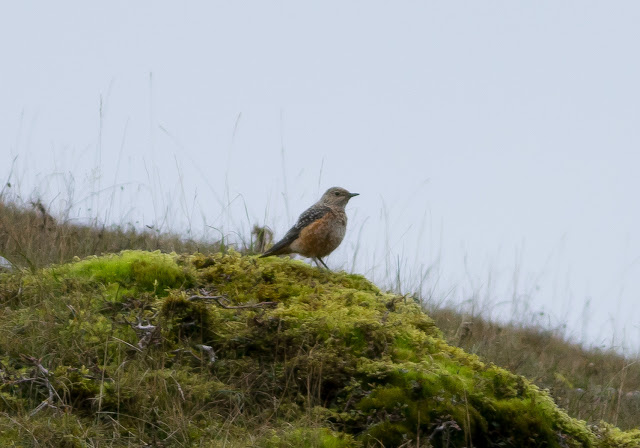 |
| Common Rock Thrush at Pwll-du, South Wales |
Making good time down the motorways and arriving in the welsh valleys after lunch, a quick ten minute stride up the muddy track later and rather surprisingly we were instantly watching our prize - one fine male Rock Thrush perching proudly in a bare tree right in front of us, just one happy photographer stood below it rapidly clicking away.
With the crowds of birders on site rapidly descending on the tree the bird soon flitted across to a nearby slope where it immediately began to probe the soft mossy tussocks, providing great scope views for all assembled. Whilst nowhere near in the same league visually as the earlier male on Scilly, the Pwll-du Rock Thrush was still every bit as charming, hints of chestnut orange coming through on the belly and flanks, whilst also sporting a back flecked with numerous delicate white speckles.
Having lapped up the views for around 20 minutes or so, the Rock Thrush suddenly took flight, flying strongly over the hillside and down the other side of the valley, apparently flushed by two people breaking the skyline on the top of the hill behind it we later heard.
 |
| The views from Pwll-du! |
Alex's great little video of the Rock Thrush
With 28 accepted records at present this was by no means a “mega mega”, but it was still a great bird that I had been wondering when I would get another opportunity to see, especially having never even seen one abroad in Spain.
Having so far been around for a good two weeks, the Rock Thrush is still present now, having seemingly set up home on the welsh mountainside and developing a taste for the abundance of mealworms that have been laid out for it by opportunistic photographers - although whether this is doing its health any good is another matter entirely.
Being just a few miles away from both the Blorenge Marmora’s Warbler and the Newport Yellowthroat, who knows what other treasures and grip-backs this little corner of Wales can deliver – an adult Cream-coloured Courser perhaps parading on one of the hillsides would certainly be most welcome……
Having so far been around for a good two weeks, the Rock Thrush is still present now, having seemingly set up home on the welsh mountainside and developing a taste for the abundance of mealworms that have been laid out for it by opportunistic photographers - although whether this is doing its health any good is another matter entirely.
Being just a few miles away from both the Blorenge Marmora’s Warbler and the Newport Yellowthroat, who knows what other treasures and grip-backs this little corner of Wales can deliver – an adult Cream-coloured Courser perhaps parading on one of the hillsides would certainly be most welcome……



